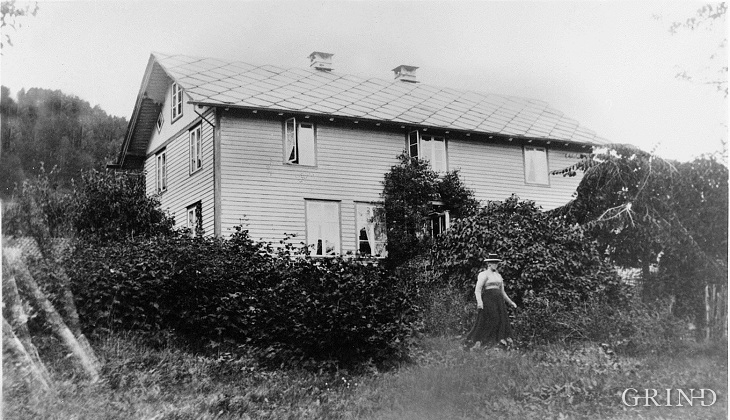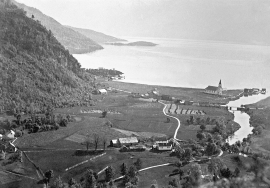Theodor Kinck expanded the house at Tangarås when he came there, and rebuilt it in the Swiss style, probably one of the earliest buildings in this style in West Norway. Hans Ernst had his abode in the loft room in the years he lived at home before he went away to study, and later on through many summers. His finely sketched and precise observations of the communities and the people we find in the book “Steder og folke” (“Places and people”) (1924), which shows Hans E. Kink’s mastery; a finely tuned stylist and a sharp observer. It is probably this side of his writing that people have had difficulty in accepting. Already in the first books, “Huldren. Et Vestlandsbillede” (The witch. A picture from West Norway), and “Ungt folk”, (“Young pople”), the local people found easily recognisable models, and in “Sneskavlen brast” (“The snowdrift broke”), they wandered around alive. The short story “Den nye kapellanen” (“The new chaplain”) has for all time become an unadorned, almost satirical close-up of inquisitiveness and probing in the local community. But the rural people felt they had been ridiculed and mocked and did not appreciate the cosmopolitan and European Hans E. Kinck.
Today the doctor’s residence at Tangarås is marked by those who lived there afterwards, the farmer and wood carver Johannes Tvedt – a pupil of Lars Kinsarvik – and the artist couple Frida and Ola Rusti. The state residence, with rough kitchen and a house from the 1700s in the yard, make out a fine unit with oak forest nearby and elm and chestnut – an old cultural environment.




